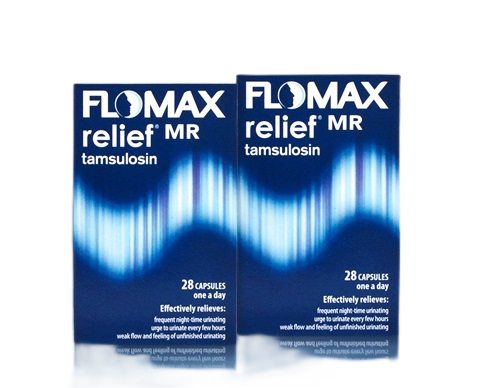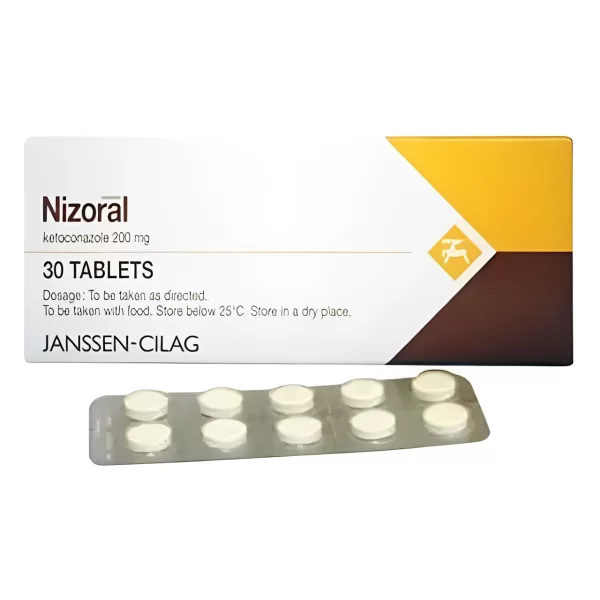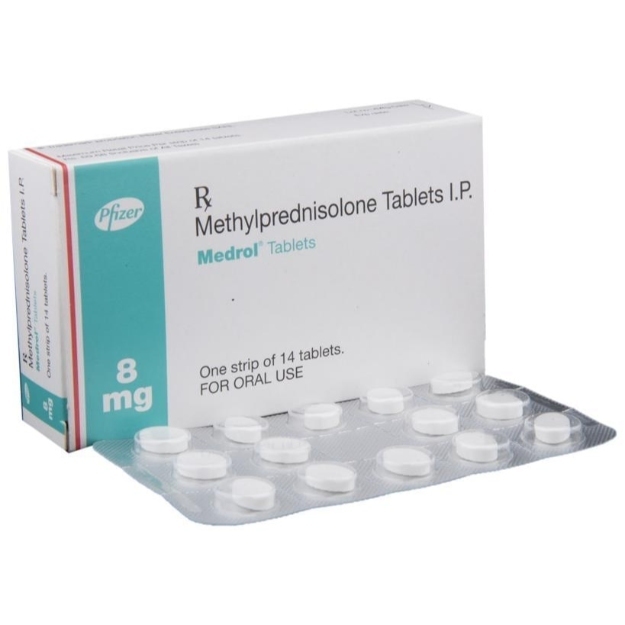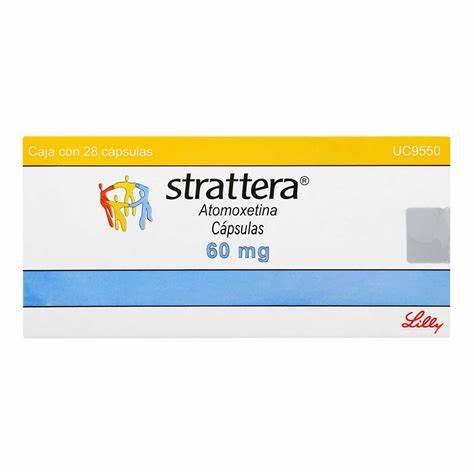
Flomax
Flomax - 4mg
| Product | Per Pill | Savings | Per Pack | Order |
|---|---|---|---|---|
| 30 caps | $1.27 | $38.12 | Buy Now | |
| 60 caps | $1.10 | $10.40 | $76.24 $65.84 | Buy Now |
| 90 caps | $1.04 | $20.79 | $114.35 $93.56 | Buy Now |
| 120 caps | $1.01 | $31.18 | $152.46 $121.28 | Buy Now |
| 180 caps | $0.98 | $51.98 | $228.70 $176.72 | Buy Now |
| 270 caps | $0.96 | $83.16 | $343.04 $259.88 | Buy Now |
| 360 caps | $0.95 | $114.34 | $457.38 $343.04 | Buy Now |
Flomax - 2mg
| Product | Per Pill | Savings | Per Pack | Order |
|---|---|---|---|---|
| 30 caps | $1.21 | $36.37 | Buy Now | |
| 60 caps | $0.95 | $15.87 | $72.74 $56.87 | Buy Now |
| 90 caps | $0.86 | $31.74 | $109.11 $77.37 | Buy Now |
| 120 caps | $0.82 | $47.61 | $145.48 $97.87 | Buy Now |
| 180 caps | $0.77 | $79.35 | $218.22 $138.87 | Buy Now |
| 270 caps | $0.74 | $126.97 | $327.34 $200.37 | Buy Now |
| 360 caps | $0.73 | $174.58 | $436.45 $261.87 | Buy Now |
Overview
General Introduction Flomax (tamsulosin) is a medication commonly used to treat benign prostatic hyperplasia (BPH), a condition characterized by an enlarged prostate gland. Approved by the FDA in 1997, Flomax works by relaxing the muscles in the prostate and bladder neck, making it easier to urinate. This selective alpha-1 blocker helps improve urine flow and reduce BPH symptoms.
Key Benefits and Unique Properties
- Symptom Relief: Provides effective relief from urinary symptoms associated with BPH, such as difficulty starting urination, weak stream, and frequent urination.
- Selective Action: Targets alpha-1 receptors in the prostate, reducing the risk of systemic side effects.
- Once-Daily Dosing: Convenient once-daily dosing improves patient compliance.
- Quick Onset: Patients often experience symptom relief within a few days of starting treatment.
- Minimal Impact on Blood Pressure: Unlike non-selective alpha blockers, Flomax has minimal impact on blood pressure, making it safer for older patients.
Effectiveness Clinical studies have shown that Flomax significantly improves urinary flow rates and reduces symptoms of BPH. Its targeted action on alpha-1 receptors in the prostate and bladder neck provides rapid and sustained symptom relief. Many patients report noticeable improvements within the first week of treatment.
Safety and Tolerability Flomax is generally well-tolerated, with common side effects including dizziness, headache, and nasal congestion. Rare but serious side effects include hypotension and allergic reactions. Regular monitoring and patient education can help manage these risks and ensure safe use.
Indications for Use
Diseases and Conditions Treated Flomax is primarily indicated for the treatment of benign prostatic hyperplasia (BPH). It helps alleviate urinary symptoms caused by an enlarged prostate, such as difficulty starting urination, weak stream, and frequent urination. By relaxing the smooth muscles in the prostate and bladder neck, Flomax improves urine flow and reduces the severity of BPH symptoms.
Primary Symptoms and Indications
- Urinary Symptoms of BPH: Flomax is effective in reducing symptoms such as difficulty starting urination, weak stream, dribbling at the end of urination, and the need to urinate frequently or urgently, especially at night.
- Improved Urine Flow: The medication helps increase urine flow, making it easier to empty the bladder completely and reducing the risk of urinary tract infections and bladder stones.
Dosage and Administration
Dosage and Intake The recommended dose for Flomax is 0.4 mg once daily. It is taken approximately 30 minutes after the same meal each day. If the response is inadequate after 2 to 4 weeks, the dose may be increased to 0.8 mg once daily. The capsule should be swallowed whole and not chewed, crushed, or opened.
Timing and Frequency Flomax should be taken once daily, 30 minutes after the same meal each day. This consistent timing helps maintain steady blood levels of the medication, optimizing its effectiveness and minimizing side effects. Patients should follow their healthcare provider’s instructions regarding the timing and frequency of dosing.
Additional Recommendations
- Hydration: Maintain adequate hydration, especially if experiencing dizziness or lightheadedness.
- Missed Dose: If a dose is missed, take it as soon as remembered unless it is almost time for the next dose. Do not double the dose to make up for the missed one. Continue with the regular dosing schedule to maintain consistent blood levels.
Mechanism of Action
Description of Mechanism Flomax works by selectively blocking alpha-1 receptors found in the smooth muscles of the prostate and bladder neck. By inhibiting these receptors, the medication causes relaxation of these muscles, which reduces resistance to urinary flow and alleviates symptoms of BPH.
Biochemical Processes The primary action of Flomax is the blockade of alpha-1 adrenergic receptors, which are abundant in the smooth muscle tissue of the prostate and bladder neck. This blockade prevents the binding of norepinephrine, a neurotransmitter that typically causes muscle contraction. By preventing this contraction, Flomax helps relax the muscles, thereby improving urine flow and reducing symptoms.
Physiological Effects
- Organ and System Functions: The relaxation of smooth muscles in the prostate and bladder neck leads to improved urine flow, easier bladder emptying, and reduced urinary symptoms.
- Therapeutic Effects: By targeting the specific alpha-1 receptors in the prostate, Flomax provides effective symptom relief for patients with BPH, enhancing their quality of life.
Composition
Active Ingredients The active ingredient in Flomax is tamsulosin hydrochloride, a selective alpha-1 adrenergic receptor blocker. Tamsulosin hydrochloride works by relaxing the muscles in the prostate and bladder neck, making it easier to urinate and reducing BPH symptoms.
Inactive Ingredients The inactive ingredients in Flomax capsules include microcrystalline cellulose, methacrylic acid copolymer, triacetin, calcium stearate, and talc. The capsule shell contains gelatin, titanium dioxide, and iron oxide, among other excipients. These ingredients help stabilize the formulation and ensure proper absorption and efficacy of the medication.
Side Effects
General Introduction Understanding potential side effects is crucial for the safe use of Flomax. Patients should be aware of both common and serious side effects to monitor their health effectively while on the medication.
Possible Side Effects
- Common Side Effects: Dizziness, headache, nasal congestion, and abnormal ejaculation are commonly reported. These side effects are generally mild and transient.
- Less Common Side Effects: Some patients may experience back pain, diarrhea, or pharyngitis.
- Serious Side Effects: Rare but serious side effects include severe hypotension, syncope, and allergic reactions such as rash, itching, and swelling. Immediate medical attention is required if any serious side effects occur.
Frequency and Severity Common side effects are generally mild and do not significantly interfere with daily activities. Severe side effects are rare but can be serious, necessitating immediate medical intervention. Regular follow-ups and patient education on correct usage can minimize risks.
Prevention of Side Effects
General Introduction Preventing side effects is key to maximizing the therapeutic benefits of Flomax. By following preventive measures, patients can reduce the likelihood of experiencing adverse reactions.
Tips for Prevention
- Follow Dosage Instructions: Use Flomax as directed to avoid excessive use, which can lead to adverse effects like severe hypotension.
- Stay Hydrated: Adequate hydration can help reduce dizziness and other side effects.
- Consult Healthcare Providers: Regular consultations can help manage and prevent adverse reactions. Inform your healthcare provider about any other medications or supplements to avoid potential interactions.
Contraindications
General Introduction Understanding contraindications ensures the safe use of Flomax. Certain conditions and diseases may preclude the use of this medication.
Conditions and Diseases
- Severe Renal Impairment: Flomax is contraindicated in patients with severe renal impairment due to the risk of accumulation and increased side effects.
- Hypersensitivity: Patients with a known hypersensitivity to tamsulosin or any of its components should not use this medication. Allergic reactions can include symptoms such as rash, itching, swelling, and difficulty breathing.
Warnings/Precautions
General Introduction Following precautions is essential to ensure the safe and effective use of Flomax. Patients should be informed about potential risks and how to mitigate them.
Important Warnings
- Orthostatic Hypotension: Flomax can cause a significant drop in blood pressure upon standing up quickly, leading to dizziness or fainting. Patients should rise slowly from sitting or lying positions to prevent these symptoms.
- Intraoperative Floppy Iris Syndrome (IFIS): This condition can occur during cataract surgery in patients taking or having taken Flomax. Patients should inform their ophthalmologist about Flomax use before surgery.
Precautions
- Regular Monitoring: Regular check-ups with healthcare providers are essential to monitor blood pressure and overall response to treatment.
- Patient Education: Patients should be educated on the proper use of Flomax, recognizing signs of hypotension, and when to seek medical help.
Missed Dose
General Introduction Proper management of missed doses helps maintain effective symptom control. Patients should be aware of how to handle missed doses to avoid disruptions in their treatment regimen.
What to Do If a Dose Is Missed If a dose is missed, it should be taken as soon as remembered unless it is almost time for the next dose. In such cases, the missed dose should be skipped, and the patient should continue with the regular dosing schedule. It is important not to double the dose to make up for the missed one, as this can increase the risk of side effects.
Tips for Adherence
- Reminders: Use alarms or medication organizers to help remember to take Flomax as prescribed.
- Routine: Take the medication at the same time each day, preferably 30 minutes after the same meal, to develop a routine and reduce the chances of missing a dose.
Drug Interaction
General Introduction Understanding potential drug interactions helps in avoiding adverse effects and ensuring the effectiveness of Flomax. Patients should be aware of common interactions and how to manage them.
Examples of Interactions
- Alpha Blockers: Concurrent use with other alpha blockers can amplify hypotensive effects, requiring careful monitoring.
- CYP3A4 Inhibitors: Medications that inhibit CYP3A4 (e.g., ketoconazole) can increase the plasma levels of tamsulosin, leading to an increased risk of side effects.
How to Avoid Negative Interactions
- Medication Review: Regularly review all medications with healthcare providers to identify and manage potential interactions before they cause adverse effects.
- Inform Healthcare Providers: Always inform healthcare providers of all medications being taken, including over-the-counter drugs and supplements, to ensure safe and effective use of Flomax.
Overdose
Symptoms of Overdose Overdosing on Flomax can lead to symptoms such as severe hypotension, dizziness, and fainting. These symptoms can vary in severity depending on the amount of medication ingested. Immediate medical attention is necessary if an overdose is suspected to prevent serious complications and ensure prompt treatment.
Actions to Take in Case of Overdose
- Immediate Measures: Seek emergency medical attention or call a poison control center immediately if an overdose is suspected. It is important to provide healthcare professionals with information about the amount of medication taken and the time of ingestion.
- First Aid: While waiting for medical help, provide supportive care to the affected individual. This includes maintaining an open airway, monitoring vital signs, and keeping the person comfortable. Do not induce vomiting unless instructed by a healthcare professional. In a medical setting, treatments may include gastric lavage, activated charcoal administration, and symptomatic management to address specific overdose symptoms.
Pharmacokinetics
Absorption Flomax is rapidly absorbed following oral administration, with peak plasma concentrations occurring within 4 to 7 hours. The bioavailability is approximately 100%, and the medication is not significantly affected by food intake, although taking it with food can reduce the risk of orthostatic hypotension. The consistent absorption characteristics contribute to its steady therapeutic effects.
Distribution The medication is extensively distributed throughout the body, with a volume of distribution of approximately 0.2 L/kg. It is highly bound to plasma proteins, primarily alpha-1 acid glycoprotein, which facilitates its transport to the target tissues. Flomax's distribution characteristics ensure that it reaches the sites of action quickly and effectively, providing prompt relief from BPH symptoms.
Metabolism Flomax is extensively metabolized in the liver by cytochrome P450 enzymes, primarily CYP3A4 and CYP2D6. It undergoes extensive first-pass metabolism, resulting in the formation of inactive metabolites. The metabolism of Flomax ensures that it is effectively cleared from the body, preventing accumulation and potential toxicity.
Elimination The metabolites of Flomax are primarily excreted via the kidneys, with less than 10% excreted unchanged in the urine. The elimination half-life is approximately 9 to 13 hours, supporting once-daily dosing. This elimination profile ensures consistent therapeutic effects and minimal risk of accumulation with daily use. The clearance of Flomax is not significantly affected by renal impairment, making it suitable for patients with varying degrees of kidney function.
Dosage Forms
Available Forms and Dosages Flomax is available in a 0.4 mg capsule form. This single dosage form provides simplicity and consistency in administration, ensuring that patients receive the same effective dose with each intake. The capsule is designed to deliver the medication effectively and safely, making it easy for patients to adhere to their treatment regimen.
Advantages of Each Form
- Capsules: Convenient and easy to administer, suitable for once-daily dosing. The consistent dosing provided by the capsule form helps maintain stable blood levels of the medication, optimizing its therapeutic effects and minimizing side effects. The capsule is formulated to ensure proper absorption and efficacy, providing reliable symptom relief for patients with BPH.
Pregnancy and Breastfeeding
Safety of Use The safety of Flomax during pregnancy and breastfeeding has not been fully established. Animal studies have shown some adverse effects on the fetus, but there are no adequate and well-controlled studies in pregnant women. The medication should be used during pregnancy only if the potential benefits justify the potential risks to the fetus. Healthcare providers should carefully evaluate the risks and benefits before prescribing Flomax to pregnant women.
Recommendations for Pregnant and Nursing Mothers
- Pregnancy: Use Flomax with caution during pregnancy, particularly in the first trimester. Pregnant women should consult their healthcare provider before starting or continuing this medication. Comprehensive risk-benefit analysis is essential to ensure the safety of both mother and child.
- Breastfeeding: It is not known whether Flomax is excreted in human milk. Due to the potential for serious adverse reactions in nursing infants, a decision should be made whether to discontinue nursing or discontinue the drug, taking into account the importance of the drug to the mother. Nursing mothers should consult their healthcare provider to weigh the benefits and risks.
- Consultation: Pregnant and nursing mothers should have regular consultations with their healthcare provider to monitor their condition and the health of their baby. Adjustments to the treatment plan may be necessary based on the mother’s and baby’s health status.
Storage Conditions
Storage Recommendations Flomax should be stored at room temperature between 20°C to 25°C (68°F to 77°F). The medication should be kept in its original container, tightly closed, and out of reach of children. Protecting the medication from light and moisture helps maintain its stability and effectiveness. These storage conditions ensure that the medication retains its potency throughout its shelf life, providing consistent therapeutic effects.
Temperature and Other Conditions
- Temperature: Avoid storing Flomax in extreme temperatures (above 30°C or below 15°C). High temperatures can degrade the active ingredient, while low temperatures can affect the tablet’s integrity.
- Moisture Protection: Keep the medication away from high humidity environments such as bathrooms. Exposure to moisture can cause the tablets to break down or lose potency.
- Shelf Life: Check the expiration date on the packaging and do not use the medication past this date. Proper adherence to storage guidelines ensures the medication remains effective throughout its shelf life. If the medication shows any signs of deterioration, such as changes in color or texture, it should be discarded.
Clinical Trials and Efficacy
Overview of Clinical Trials Flomax has been evaluated in numerous clinical trials to assess its efficacy and safety in treating benign prostatic hyperplasia (BPH). These studies typically involve large patient populations with various demographics and conditions. The trials are designed to measure improvements in symptoms, urinary flow rates, and overall quality of life. The results consistently demonstrate the medication’s ability to provide significant relief from BPH symptoms, supporting its use in clinical practice.
Key Findings and Conclusions
- Efficacy: Clinical trials consistently show that Flomax significantly improves urinary flow rates and reduces symptoms of BPH. These findings highlight the medication’s effectiveness in managing the condition and enhancing patients’ quality of life.
- Safety: The safety profile of Flomax is well-documented, with a low incidence of severe side effects when used as directed. Long-term studies confirm its tolerability and continued effectiveness over extended periods. Patients generally experience minimal side effects, making it a reliable and safe treatment option for chronic BPH.
- Comparison: Flomax’s efficacy is comparable to other alpha-1 blockers and superior to placebo. It provides an effective alternative or adjunctive therapy for patients who need additional control of their BPH symptoms. This makes it a valuable option in the management of benign prostatic hyperplasia.
Conclusion
Summary of Key Points Flomax (tamsulosin) is an effective and well-tolerated medication for managing benign prostatic hyperplasia (BPH). Its mechanism of action involves selectively blocking alpha-1 receptors in the prostate and bladder neck, reducing muscle tension and improving urinary flow. Clinical trials have demonstrated its ability to provide significant relief from BPH symptoms, improve urinary flow rates, and enhance overall quality of life. The medication is available in a convenient once-daily capsule form, making it easy for patients to adhere to their treatment regimen.
Primary Benefits and General Recommendations Flomax offers several advantages, including its targeted action on the prostate, minimal impact on blood pressure, and quick onset of symptom relief. It is effective in reducing urinary symptoms associated with BPH and improving urine flow. Patients and healthcare providers should consider Flomax for comprehensive management of benign prostatic hyperplasia. Regular monitoring and adherence to prescribed dosages enhance its safety and efficacy. For optimal results, patients should follow their healthcare provider’s instructions and maintain open communication about their treatment progress.





